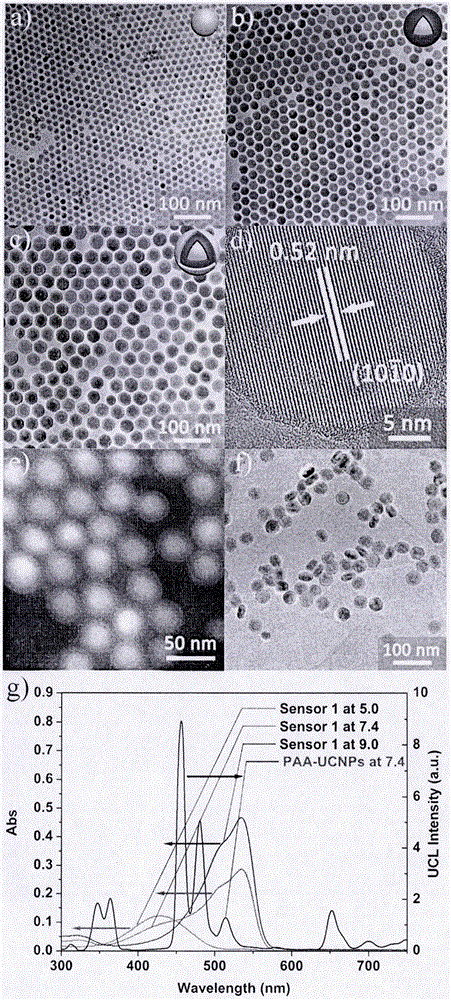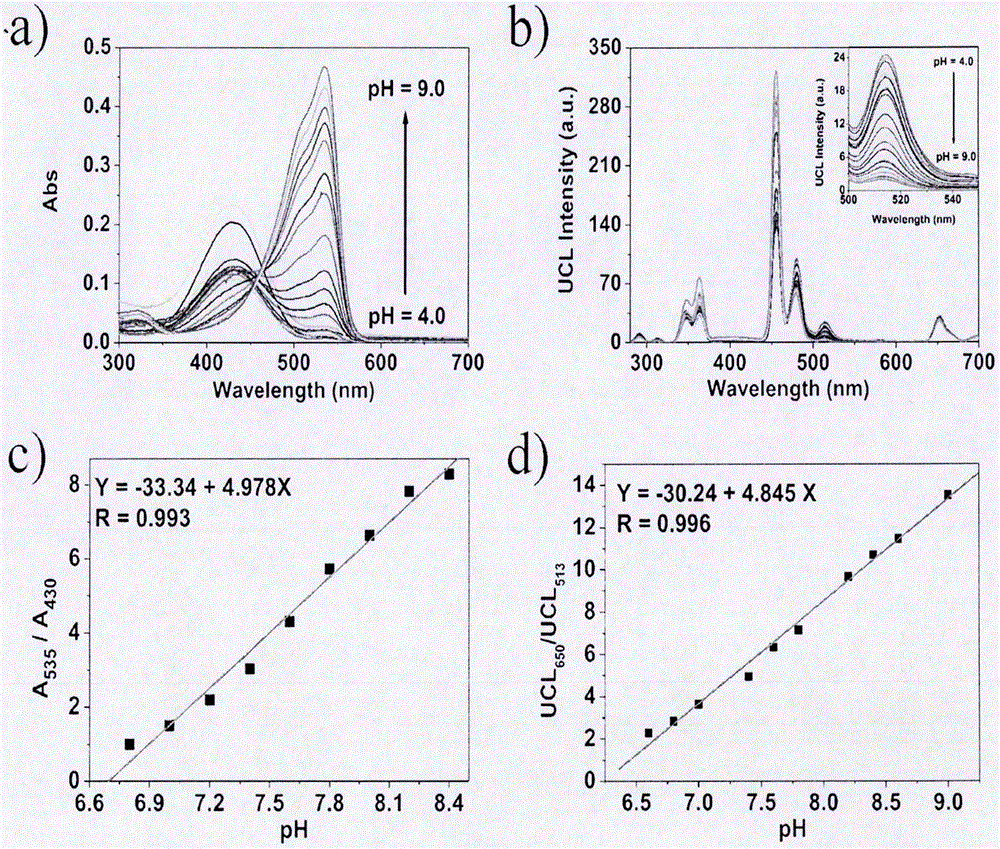Compound for preparing near-infrared rate light-emitting upconversion nanomaterial as well as preparation method and application of compound
A technology of nanomaterials and compounds, applied in the field of analytical chemistry, can solve problems such as application limitations, and achieve good light and thermal stability, good anti-interference, and good reversibility
- Summary
- Abstract
- Description
- Claims
- Application Information
AI Technical Summary
Problems solved by technology
Method used
Image
Examples
Embodiment 1
[0042] Compound 1 adopts the following synthetic route:
[0043]
[0044] Weigh 4-carboxyphenylhydrazine hydrochloride (500mg, 2.46mmol) and sodium hydroxide (98.5mg, 2.46mmol) in a 100mL eggplant-shaped bottle, add an appropriate amount of ethanol for ultrasonication, stir at room temperature, dissolve for 30min, and then Spin out the ethanol, transfer the remaining solid to a 100mL three-neck flask, add 16mL of glacial acetic acid to dissolve, then add sodium acetate (405mg, 4.94mmol), ultrasonically dissolve, and finally add 3-methyl-2-butanone (397μL, 3.7mmol), heated to 100°C, and refluxed for 16h. After the reaction is complete, stop the reaction, cool to room temperature, distill under reduced pressure, spin out glacial acetic acid, cool to 0°C with ice water, slowly add saturated sodium carbonate solution until no bubbles are generated, adjust pH=4 with hydrochloric acid , extracted three times with dichloromethane, the oil phase was collected, dried with anhydrous...
PUM
 Login to View More
Login to View More Abstract
Description
Claims
Application Information
 Login to View More
Login to View More - R&D
- Intellectual Property
- Life Sciences
- Materials
- Tech Scout
- Unparalleled Data Quality
- Higher Quality Content
- 60% Fewer Hallucinations
Browse by: Latest US Patents, China's latest patents, Technical Efficacy Thesaurus, Application Domain, Technology Topic, Popular Technical Reports.
© 2025 PatSnap. All rights reserved.Legal|Privacy policy|Modern Slavery Act Transparency Statement|Sitemap|About US| Contact US: help@patsnap.com



